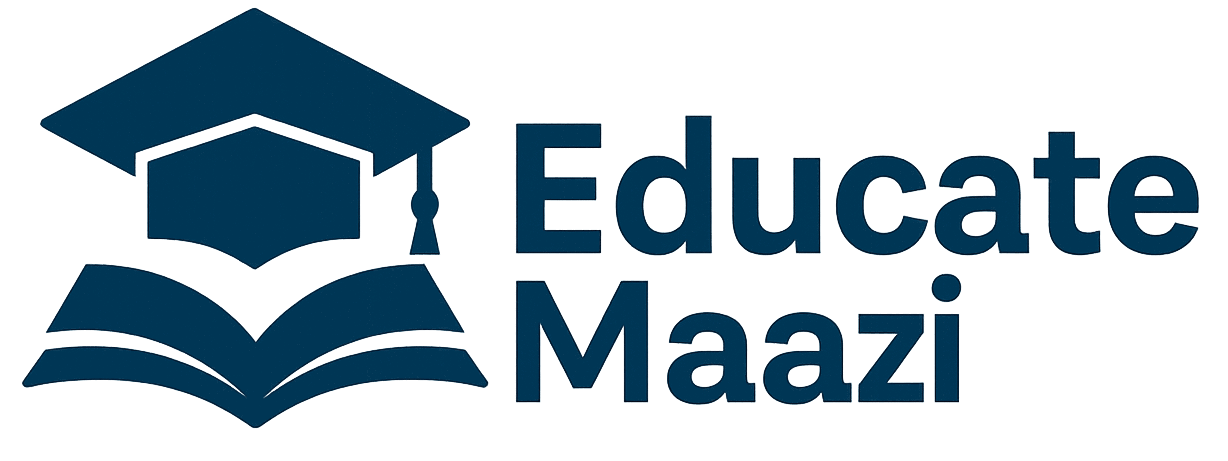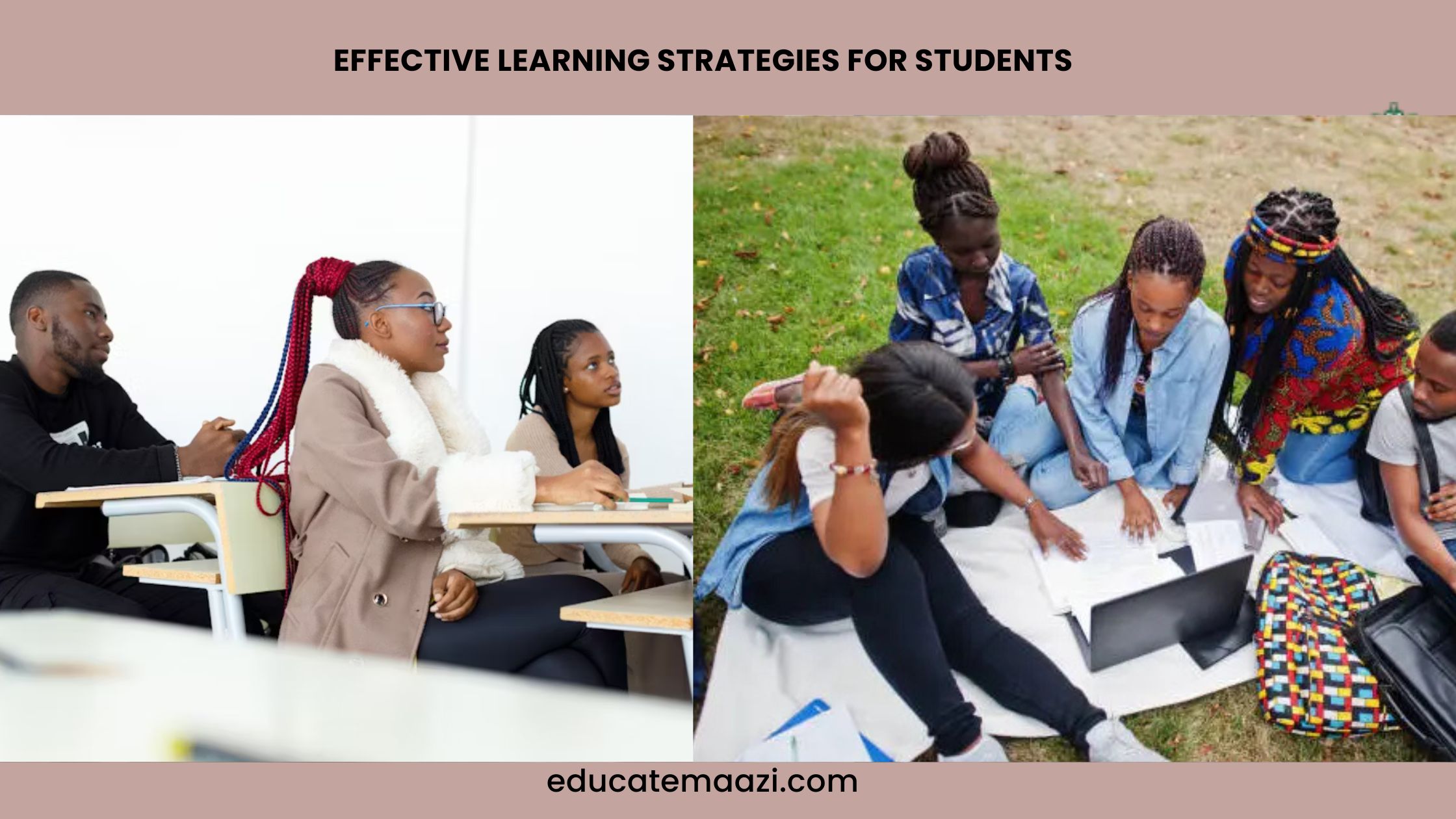Effective learning strategies are what every students need to excel. Students need different techniques to support their learning. These techniques have been thoroughly researched on and believed to be effective in learning processes. Students, however, should embrace them for their cognitive, metacognitive and psychomotor development.
The models for effective learning strategies for students include active learning or active recall, spaced repetition. Elaboration and metacognitive methodologies which enable students to learn faster and internalize the contents of their respective academic disciplines and improve their learning outcome and academic performances.
These effective learning strategies for students further assist them to not just memorize what they have been taught or what they have learned, rather, they help them to have in-depth understanding of the subject and retain the information on a long-term basis.
As students are looking for admissions into any university, college or high school, it is imperative they have in the back of their minds that academic success is their sole responsibility. To get admission into a high school or university is a phase, the second and main phase is to continue learning and perform well academically. Winning is the goal!
The lack of effective learning has made some students drop out from school. They could not cope with the rigorous academic exercises required of students. In order to remain committed to school without fear of becoming a school dropout or having low grades which may negatively affect scholarship, it is imperative that students consider the best strategies that will effectively assist their learning outcome and help them achieve their academic goals.
Key Models for Effective Learning Strategies for Students
We are going to consider key points that will help students succeed in their academic goals. The following effective learning strategies for students have been studied and authenticated by researchers and scholars to be impactful in students’ academic journey. We are going to consider them one after the other, below:
- Active Learning and Active Recall: Being fully engaged in classroom activities help students to learn effectively. Engaging in class assignments/group projects, contributing to the classroom discussion during lectures, asking questions, and answering questions have proven to be a great strategy that help students learn effectively.
In the case of active recall, you should learn how to retrieve information from memory, and not try to reread your textbooks or cram it. This is not a case of memorization, but having an in-depth understanding of the topic without total reliance on books. Even if you were sleeping and someone woke you up, you would be able to demonstrate that you have a full understanding of the topic. You can achieve this by self-testing and practicing questions and answers. List out questions in that particular topic, ask yourself the questions, then answer it. The rhetorical questions and exercise will help you recall what you have learned and it will keep your mind active, not to forget easily.
- Spaced Repetition: It is not advisable to cram. The problem with cramming is that a little thing may cause you to forget what you have crammed. Instead of cramming, it is advisable for you to have different study sessions.
To forget what you have learned never makes you a bad student. You are a human. It is expected that you should, at one point, forget what you have learned. However, giving yourself a space to come back and relearn again, will help you have a good memory of the topic or course; and at the same time, you will have a lasting retention of that topic or course. Instead of trying to know everything at once, space the time of learning and repeat the process again, you will effectively learn better.
- Elaboration: One of the ways you as a student can effectively learn well or better is by explaining terms and words in your own way. You have to expand your thoughts, and not stick to what has already been written. You need to ask “why” questions, make arguments, connect your thoughts and discuss. This will help you process information and show you have a clear understanding of what you have learned. The more you try to elaborate and convey your thoughts, the more things you have learned and read will be coming out in your head.
- Metacognitive Strategies: As a student, this strategy is very important as it enables you to set academic goals and understand that learning is a process. You will consciously know that your learning ability is a process, thereby setting achievable goals, planning your schedules, evaluating how you understand what you are studying and also evaluating how the process of learning is effective. Metagonition has to do with self-regulation which fosters academic autonomy. You are in-charge of your learning process and outcomes.
- 5. Interleaving: This has been proven to be an effective learning strategy for students when you mix different topics while studying. The effect is that it helps in deeper learning and “generalization of concepts”. What it means is that you can study different things at the same time. Mix different topics up, you will not just understand what you are learning but elaborate the way you approach learning as a general concept.
- Retrieval Practice: This strategy is similar to active recall which has been discussed in number one. This entails that you should constantly test yourself on academic materials without consulting your notebooks or textbooks. This process helps to strengthen your memory. Even when you are sleeping and someone wakes you up, then asks you questions regarding what you have learned or studied, you can effectively answer. This retrieval practice should be done regularly as it helps your retention.
- Concrete Examples: When you are studying or learning anything, use your head to create examples. Always ask yourself, what is the example of this thing I am learning? You can even use things around you to formulate examples. These examples, however, should illustrate the abstract concepts you have in your mind. When your memory hits the information you have already stored in your head, you can then relate with and understand everything.
- Dual Coding: Words are not always enough; visuals in form of images or diagrams have proven to help the memory store and process information. In the context of dual coding, however, it is advisable to use both words and visuals to convey information. When you mix both words and visuals, your memory could be enhanced and you will understand what you are learning better.
- Peer Teaching/Review: This is a part of active learning and active participation where students will teach themselves. In some cases, the classroom is divided into groups and peers where each student actively engages in teaching others. This is one of the best strategies students employ in learning. Students can review what their mates have done.
- Graphic Usage: Most people learn faster with visual tools than words. These visual tools may include powerpoint presentation, the use of map, graphs, and other visual representations. These visual tools foster adequate comprehension and effective learning outcomes.
- Constructive Feedback: Feedback, given positively in a constructive manner, helps students to learn better, improve and readjust learning strategies. You should be open-minded when feedback doesn’t go the way you expected it. Being receptive to criticism and feedback helps you to improve. It doesn’t mean you don’t know what you are doing; however, feedback done constructively is a way of telling you the areas you should work on and become a good student.
So far, we have discussed different effective learning strategies for students, and if you practice these methods, you will improve in your academic performance, as well as your learning experience.


Wow. Such an interesting read.
It’s clear that studying for a post graduate no be beans
These strategies of learning are top-notch in education, sir.
In the case of using a visual strategy to learn, it has become easier for me to grasp concepts effectively and it really helped me a lot to ace my exams.
Wow…this is quite educating.
Kudos!
Thank you for this. It is well detailed
Well detailed. Thanks
Very insightful and helpful.Thanks.
Wooow! This is mind blowing
Very helpful and knowledge packed writeup.Am glued
Knowledge received with Thanks.
Very helpful, thanks.
Very insightful Mazi.
Thanks.
This is very educative
Thanks very much Mazzi
Thank you so much Maazi.
This will help greatly.